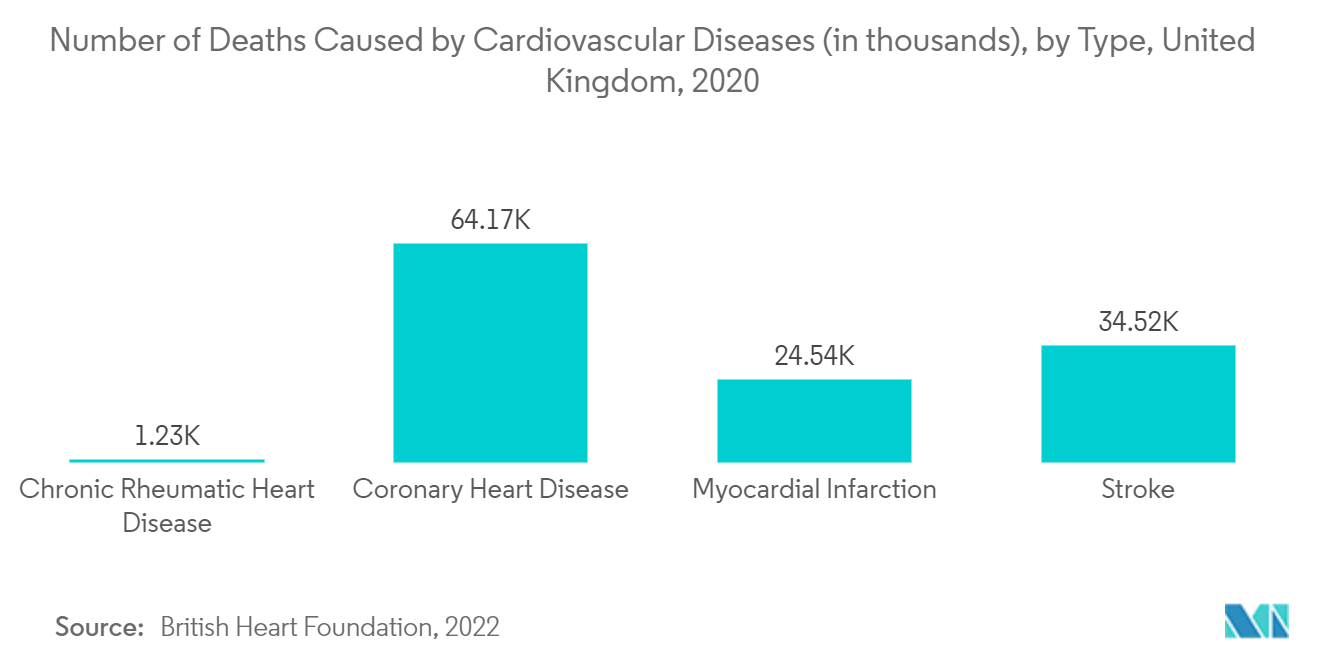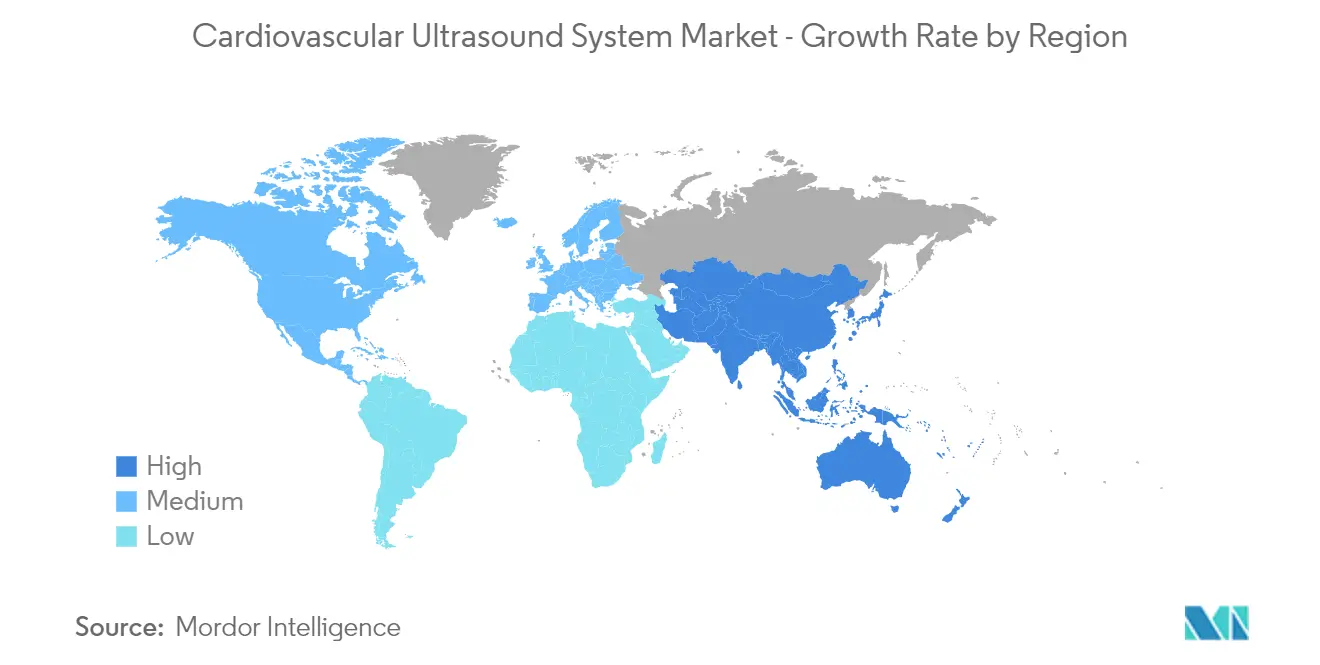Market Trends of Global Cardiovascular Ultrasound System Industry
This section covers the major market trends shaping the Cardiovascular Ultrasound System Market according to our research experts:
The 2D Ultrasound Imaging Segment is Expected to be Fastest Growing Segment Over the Forecast Period
2D ultrasound imaging is also known as B-mode echography or sonography. It displays a 2D map of B-mode data and is currently the most common form of cardiac ultrasound imaging used worldwide. It uses multiple transducers. It enables the generation of multiple images of the field or frames every second on the screen, giving an illusion of movement. It is primarily used to measure cardiac chamber dimensions, assess valvular structure and function, and improve the accuracy of interpretation of Doppler modalities. 2D ultrasound is one of the most common forms of technology used.
Owing to the high prevalence of cardiovascular diseases and wide acceptance and usage of 2D ultrasound systems, the segment is expected to grow significantly over the forecast period. For instance, according to the 2022 report of the American Heart Association (AHA), there were about 68.2 million ischemic stroke cases, 18.9 million intracerebral hemorrhages, and 8.1 million cases of subarachnoid hemorrhages in 2020 which has increased from the previous year and thus, owing to the high burden of the CVDs, the segment is expected to grow over the forecast period.
Moreover, in October 2020, Royal Philips launched the Ultrasound 3300, a new innovative ultrasound series tailored for general Imaging and cardiovascular imaging procedures. Such product advancement will boost vertical growth over the coming years.
Thus, the segment is anticipated to witness significant growth over the forecast period due to the abovementioned factors.

North America is Expected to Dominate the Market Over the Forecast Period
North America is anticipated to lead the market owing to the high adoption of ultrasound modality in general diagnostics and the rising prevalence of lifestyle-associated chronic diseases. The high demand for technologically advanced medical devices is expected to propel market growth in the region.
The major factor driving the market is the rising global burden of various coronary heart diseases, such as stroke and cardiomyopathy, which cause a global burden of cardiac-related deaths. As per a report by the United States Centers for Disease Control (CDC), statistics updated in 2021, every 40 seconds, an American may have a heart attack. This scenario leads to a higher demand for cardiovascular ultrasound systems for better diagnosis, which will drive the market in the United States.
Moreover, in October 2020, GE Healthcare received the United States Food and Drug Administration's 510k clearance for its ultra-edition package of vivid cardiovascular ultrasound systems, which include new features based on artificial intelligence (AI) that enable clinicians to acquire faster, more repeatable exams consistently. Also, in September 2020, Philips Healthcare introduced the latest addition of dedicated cardiovascular ultrasound solutions, the Affiniti CVx, to support the cardiology departments in delivering better care to more patients with increased efficiency and throughput.
Furthermore, supportive awareness initiatives for disease awareness are projected to support the market for cardiovascular devices in North America. For instance, in February 2020, Mexico joined the HEARTS initiative to strengthen primary healthcare for CVD. Promoted by the Pan American Health Organization/ World Health Organization (PAHO/WHO), the initiative aims to improve the prevention and control of hypertension at the primary care level.
Thus, owing to the abovementioned factors, the North American region is expected to show lucrative growth over the forecast period.


